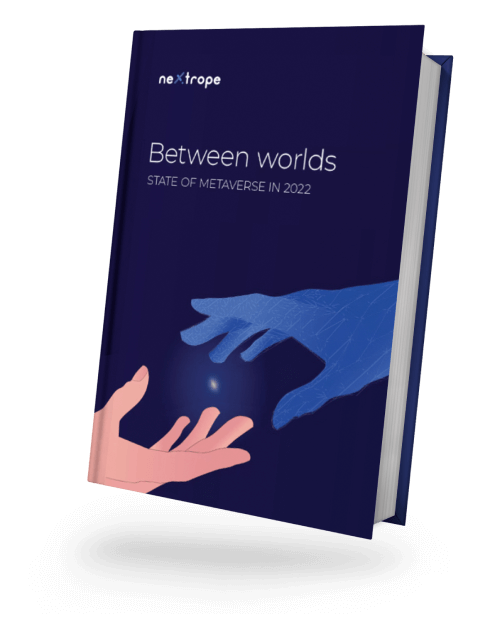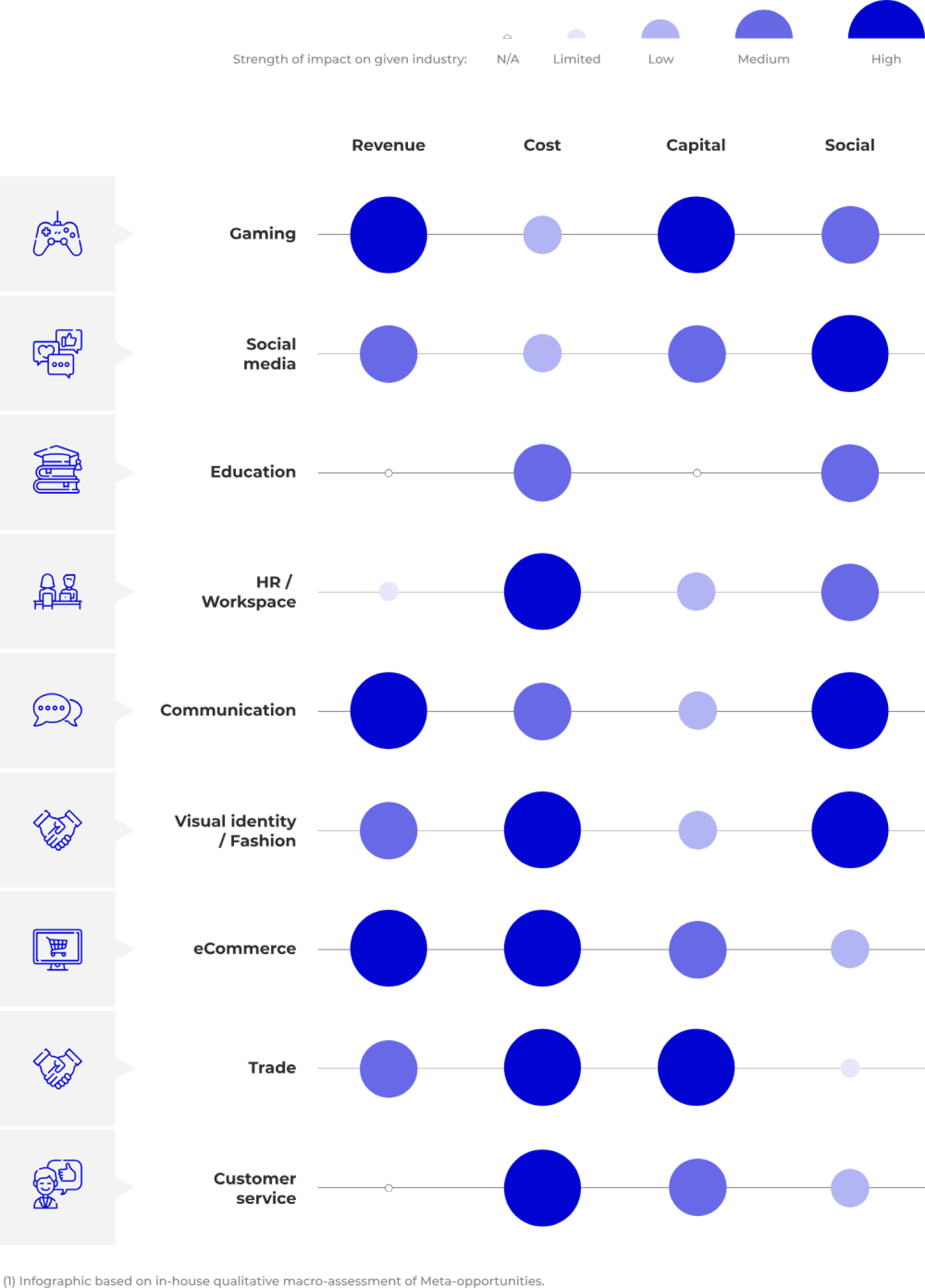The Best Way to Predict the Future is to Create it
By exploring the patterns of today, we wanted to generate market-related insights on the events of tomorrow. We analyzed different sectors, different players, and different strategies, all to give you, the ability to see the world as it changes.
Download the reportGet an expert insight and become the change frontrunner
In this report, we synthesize market-relevant stories of metaverse development with the intent of addressing the questions that businesses want answered.
By exploring the patterns of today, we seek to generate market-related insights on the events of tomorrow. We analyse different sectors, different players, and different strategies, all to give you, a business specialist wanting to support the growth of your company, the ability to see the world as it changes.
Our objective is to assist companies in making informed decisions on how to efficiently restructure their organizations, better manage their assets and successfully mitigate the risks that lie ahead.
The future has never been so close, yet there is still a long way to go. At Nextrope, we are frontrunners to the metaknowledge, and this is thanks to a tightly-knitted fellowship that tirelessly works to understand and predict change.
What will you find in the report?
- Key Concepts
- History & Evolution
- Maket & Policy Analysis
- Metaverse Landscape
- Industrial Applications
- Challenges for metaverse

Key Characteristics of the Metaverse
On October 28, 2020, Mark Zuckerberg announced Facebook's rebranding to "Meta", highlighting the technology's promise. Subsequently, Microsoft introduced Mesh, followed by Google and Sony sharing their visions. As tech giants unveiled new directions, it was clear they were pioneering a new frontier. While many view this as a distant science fiction dream, we are already immersed in early Metaverses, such as Fortnite concerts and Decentraland. We are not just connecting to the Internet; we're becoming part of it.
-
Persistent
Continuous and indefinite, analogous to the concept of time. It does not go back, halt or skip forward.
-
Synchronous and live
It will operate in real-time and be available to everyone.
-
Inclusive
Removal of limits or obstacles to concurrent users and use, yet at the same time also providing individuals with a personal and distinct sense of presence. Anyone can be part of the Metaverse and partake in all it has to offer, together and at the same time. Hundreds of thousands if not millions will be able to participate in a single moment.
-
A fully functioning economy
A fully functioning economy: Individuals and businesses are enabled to create, own, invest, sell, and be remunerated for an extensive range of works and services that generate value recognized by others.
-
An inter-dimensional experience
It reaches both into the physical and digital world, both in public and private grids and in open and closed platforms.
-
Contribution-based
The “meta-terra” will be inhabited by “content” and “experiences” generated and controlled by a vast number of operators, which can be private individuals, groups, or corporations.
-
Of enhanced interoperability
Digital possessions, whether items in a videogame or simply data, can be shared across experiences. For example, say you buy a rare sword in “Skyrim”. In the Metaverse, you can share and use this item on another game, say “Assassin’s Creed” and so on. A user can also donate an item through various social media apps. Today that is not possible as acquisitions or possessions are restricted to the experience they are originally intended for.
Key technologies that drive Metaverse development
-

AR & VR
Augmented reality (AR) and Virtual reality (VR) pioneer the immersive 3D experience that consumers associate to the Metaverse. -

Artificial Intelligence
The rate and scale at which AI can collect and analyze data, combined with ulterior machine-based processes can provide an in-depth analysis of a Metaverse ecosystem. -

Blockchain
Blockchain is a key technology for the Metaverse because it provides decentralized, secure, and verifiable ownership of digital assets, enabling trust and trade in virtual worlds. -

Internet of things (IoT)
The IoT will bridge the details of the physical world into the digital one, increasing the precision with which the virtual sphere reproduces elements of the material one.
Value proposition of the Metaverse in industries

 en
en  pl
pl 


